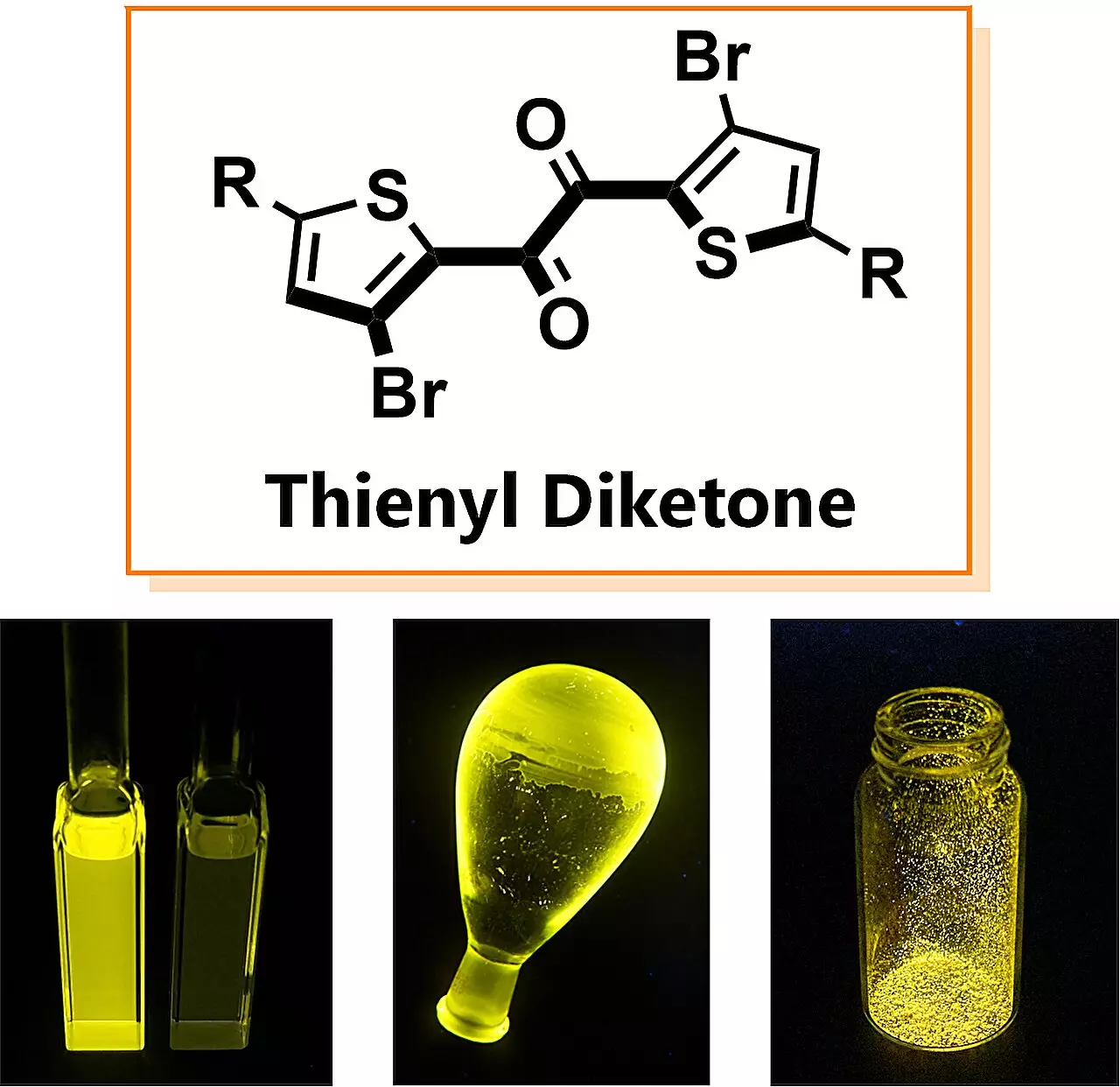In a remarkable stride within the realm of organic chemistry, researchers from Osaka University have unveiled a new organic molecule, thienyl diketone, that promises to redefine phosphorescence efficiency. This discovery, published in the esteemed journal *Chemical Science*, highlights a novel approach in achieving phosphorescence over ten times faster than previously established materials, thus crafting a pathway for innovative applications in various fields, including organic electroluminescent displays (OLEDs) and cancer diagnostics.
The Challenge of Traditional Phosphorescence
Phosphorescence, the phenomenon where a substance absorbs light and re-emits it over an extended period, traditionally presents challenges. Notably, the reliance on rare and expensive metals like iridium and platinum has hampered advancements in developing cost-effective, sustainable materials. The competition between light-emitting transitions and non-radiative processes has long plagued scientists, as photons must outpace energy lost as heat, leading to a sluggish phosphorescent response. This new research radically alters the narrative by presenting thienyl diketone as a beacon of hope for high-efficiency phosphorescent materials.
Deciphering the Mechanism
What makes this breakthrough stand out is the elucidation of the underlying mechanisms driving the molecule’s superior performance. As senior author Yosuke Tani candidly notes, the discovery was serendipitous, facilitating an unexpected exploration into molecular efficiency. Through meticulous analysis, the research team gradually connected significant dots that clarify how thienyl diketone achieves rapid energy transitions. This capability not only enhances phosphorescent speed but also broadens the scope of potential applications.
Paving the Way for Future Advancements
With the newfound understanding of the mechanisms at play, the implications extend beyond theoretical curiosity. Dr. Tani expressed optimism regarding future design guidelines for organic phosphorescent materials that are devoid of rare metals. This advancement could catalyze a shift in material science, fostering a plethora of innovative applications in fields such as lighting technology, OLED screens, and diagnostics for medical purposes.
The exploration of thienyl diketone paves the way for a sustainable future in phosphorescent materials, challenging long-held paradigms regarding reliance on rare metals. By establishing a conceptual foundation for developing superior organic molecules, this research instills a sense of excitement for prospective innovations that may stem from this groundbreaking work.
The Broader Impact of Phosphorescent Technologies
The promise held by high-efficiency phosphorescent materials such as thienyl diketone extends beyond practical applications; it embodies a shift towards more eco-friendly solutions in technology. As global industries are increasingly focusing on sustainability, this exploration can potentially reduce the ecological footprint associated with the production of traditional phosphorescent materials. The drive for innovation in light-emitting technologies can redefine the possibilities in consumer electronics, medical diagnostics, and even architectural lighting.
The developments emerging from Osaka University’s research stand as a testament to the power of chance discoveries in science. As we delve deeper into the intricate workings of thienyl diketone, we face an exhilarating horizon brimming with possibilities for advanced materials that could revolutionize not just how we see light, but how we leverage it to enhance human experiences.

